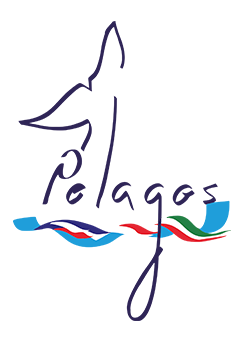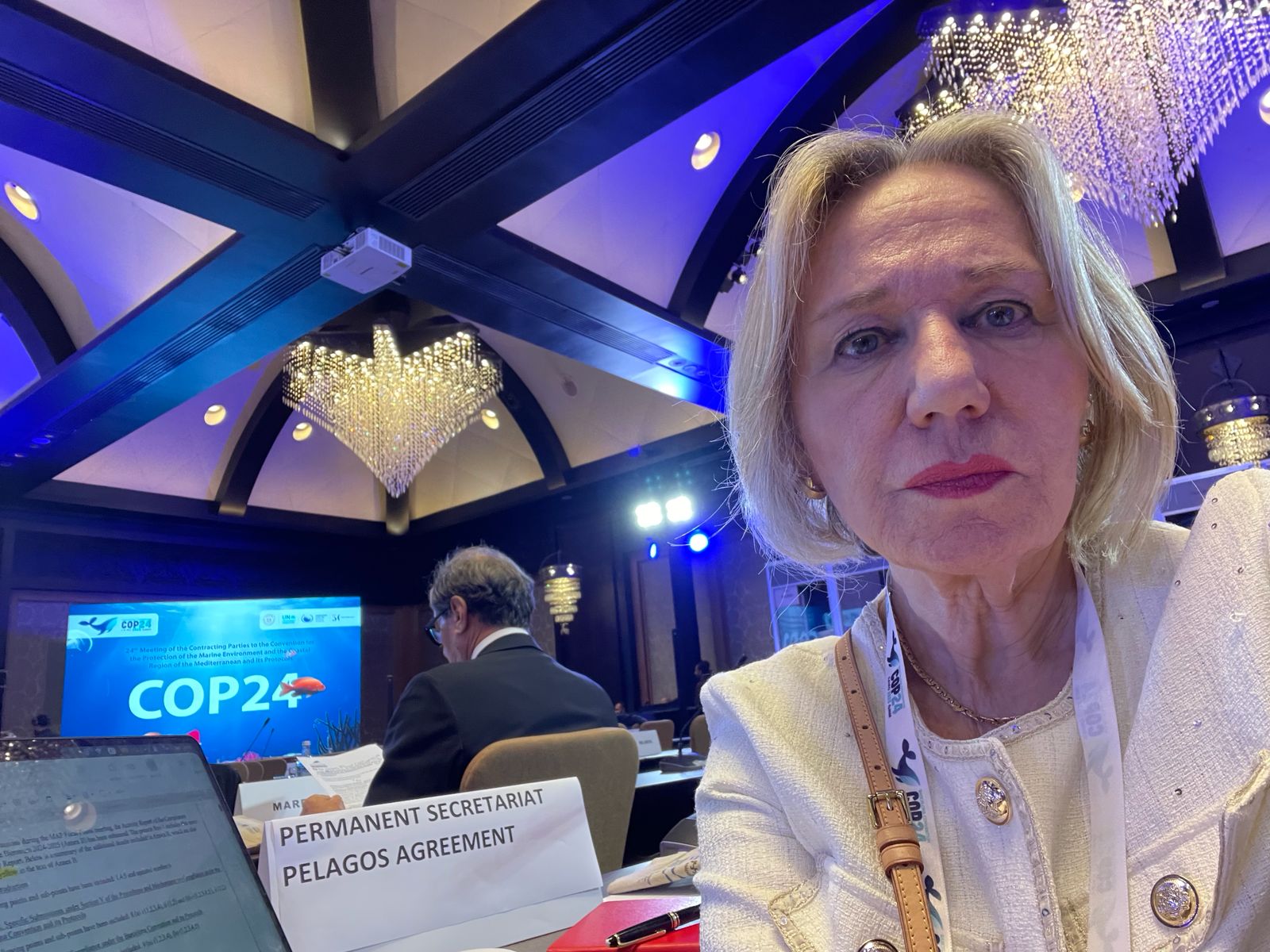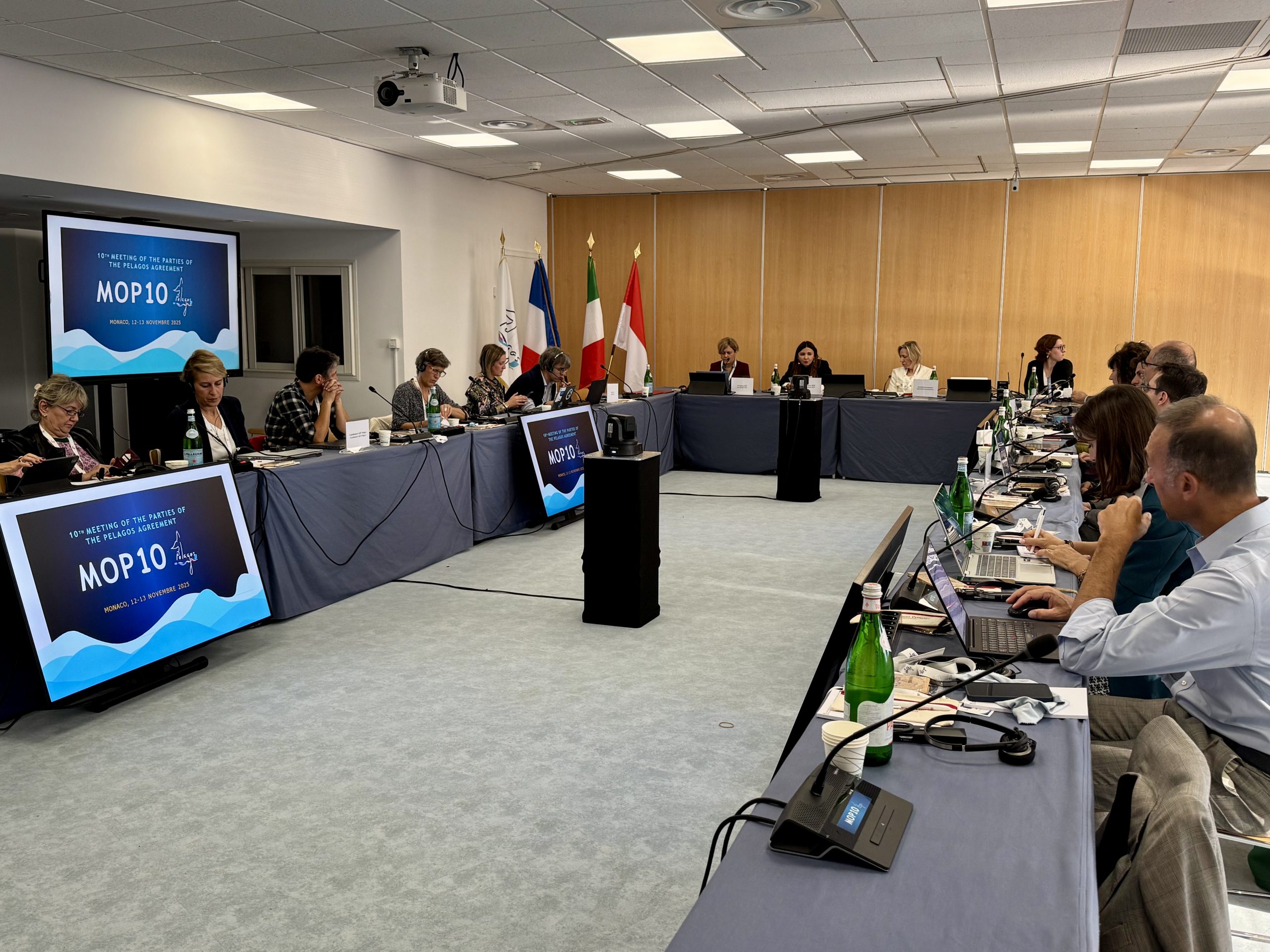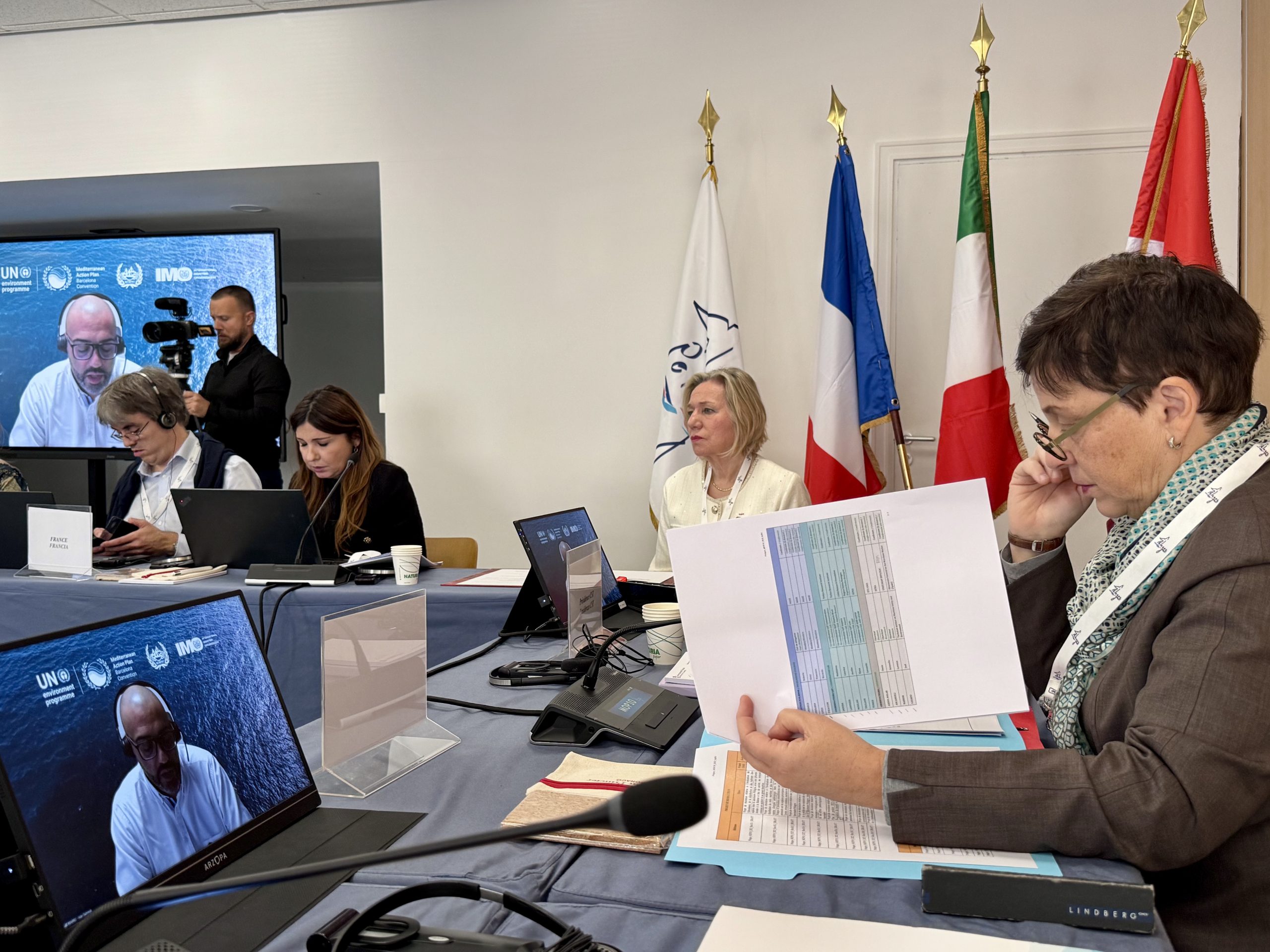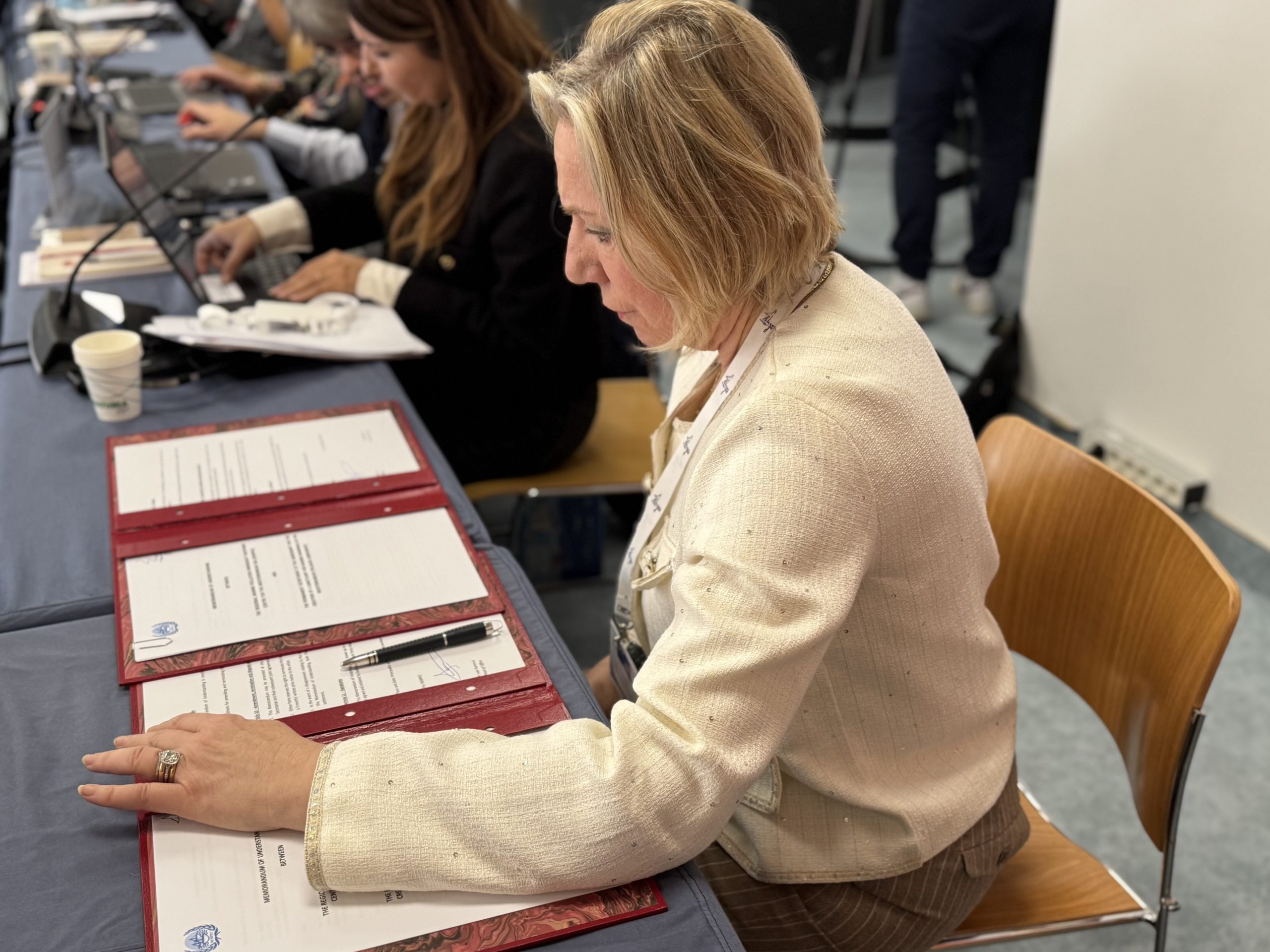Sustainable port activities for the protection of setaceans: a roadmap for ports and marinas in the Pelagos Sanctuary
Sustainable port activities for the protection of setaceans: a roadmap for ports and marinas in the Pelagos Sanctuary
Within the Pelagos Sanctuary, port and nautical activities represent one of the main challenges for marine wildlife conservation. How, then, can such port activities be made more compatible with the conservation of marine mammals? This question is addressed by the project “Sustainable Ports in the Pelagos Sanctuary”, promoted by the Pelagos Agreement as part of a priority action under its 2022–2027 Management Plan.
Starting from the recognition that this issue is still underexplored, the project produced an in-depth analysis of the potential impact of port activities within the Sanctuary, with a review of the regulatory framework and existing best mitigation practices. This led to the development of a roadmap of operational recommendations, aimed at promoting good practices for environmental sustainability of ports, particularly concerning cetaceans and their habitats.
To address such a complex and scarcely studied issue as the impact of port activities on cetaceans, the Pelagos Agreement relied on a group of experts with complementary skills. Marine biologist Caterina Lanfredi, port law specialist Francesco Maria di Majo, and environmental law expert Cristiana Roppo joined forces to analyze the relationship between port infrastructures and marine fauna from multiple perspectives. This integrated approach helped to highlight not only the risks and criticalities linked to port activities but also the opportunities to improve the sustainability of this strategic sector.
Objectives and approach of the project
The scientific consultancy focused on two main objectives. On one hand, to identify the direct and indirect pressures that port activities can exert on cetaceans and their habitats: from underwater noise to pollutants, from seabed alteration to the constant presence of vessels. On the other hand, to transform this evidence into concrete proposals: a set of practical, applicable recommendations to help ports and marinas in the Sanctuary reduce potential environmental impacts and adopt more biodiversity-friendly behaviors.
The analysis was developed through four phases:
- Creation of an inventory of ports and marinas within the Sanctuary (255 facilities identified);
- Assessment of port activities with potential impact on cetaceans (e.g., underwater noise, plastics, discharges);
- Review of international and local regulations and best practices;
- Development of a roadmap with operational recommendations and awareness tools for stakeholders;

Georeferenced location of the ports identified within the Pelagos Sanctuary.
Mapping, analyzing, proposing: project results
The scientific consultancy systematically built, for the first time, a detailed picture of port infrastructures within the Pelagos Sanctuary, highlighting their potential impact on marine wildlife, particularly cetaceans. A total of 255 ports and marinas were identified, distributed across Italy, France, and Monaco, with an average density of one port every 8 km of coastline—a figure that illustrates how pervasive port activities are along the Sanctuary’s coast.
Over 72% of the surveyed facilities are located near protected areas, such as Marine Protected Areas, Natura 2000 sites, or marine parks, while 55% are located in municipalities that have signed the Pelagos Partnership Charter, thereby formally committing to marine mammal protection. This indicates a major opportunity: many of the ports involved already operate in contexts of high environmental sensitivity and could therefore become key players in the transition toward more sustainable management.
Three categories of port activities emerged as particularly impacting cetaceans and their habitats:
- Underwater noise, generated by activities such as construction or maintenance of infrastructures (e.g., dredging, pile driving) and antifouling systems based on sound emissions (ultrasounds), which can seriously disrupt cetacean communication and orientation, forcing them to abandon frequented areas;
- Plastic and microplastic pollution, linked to inefficient port waste management and illegal discharges at sea, representing both a direct threat (ingestion, suffocation) and an indirect one (bioaccumulation of toxic substances) for marine fauna;
- Discharges and chemical substances, which, together with coastal habitat degradation, contribute to contamination of water and sediments, with potentially severe and long-lasting effects on the entire marine trophic web.

Summary of selected port activities, their potential direct or indirect impact on cetaceans and the good practices available to mitigate the impact.
Based on these elements, a risk assessment was carried out for each type of activity, classifying it into three levels (high, medium, low) according to three main criteria:
- probability of impact on cetaceans and marine habitats;
- reversibility of the effect over time;
- complexity of management and mitigation measures.
The analysis was based on an extensive review of scientific and legal literature (over 150 sources consulted) and on active dialogue with key stakeholders: ports, local authorities, the nautical sector, and environmental organizations. This participatory approach made it possible to integrate technical data and operational knowledge, with the goal of developing realistic and shared recommendations that can be applied in the daily practice of Sanctuary ports.
The roadmap: an action plan for the Sanctuary’s ports
At the core of the project is the operational roadmap, conceived as a flexible yet effective tool, adaptable to the specificities of different ports. The recommendations are divided into three areas of intervention:
- Engage and educate
Raise awareness and train port staff, nautical operators, and sea users on sustainable practices, fostering a shared culture of marine protection. - Research and innovate
Promote the adoption of low-impact technological solutions, such as electric engines or alternative antifouling systems, and encourage the collection and sharing of environmental data. - Plan and take actions
Integrate biodiversity conservation objectives into port policies and management plans, including through environmental certifications, local regulations, and public-private partnerships.
A strategic opportunity for the Pelagos Sanctuary
Ports are not only places of transit or economic development: they can become spaces for environmental innovation and active participation in marine protection. The “Sustainable Ports” project shows that through concrete and coordinated actions, it is possible to significantly reduce the impact of port activities on cetaceans and, more broadly, on the marine ecosystem.
With this initiative, the Pelagos Agreement reaffirms the importance of an integrated approach between law, science, and governance, in line with European strategies (such as the EU Biodiversity Strategy 2030) and international objectives for marine wildlife protection. The path has been mapped: it is now up to ports, institutions, and local communities to walk it together.
